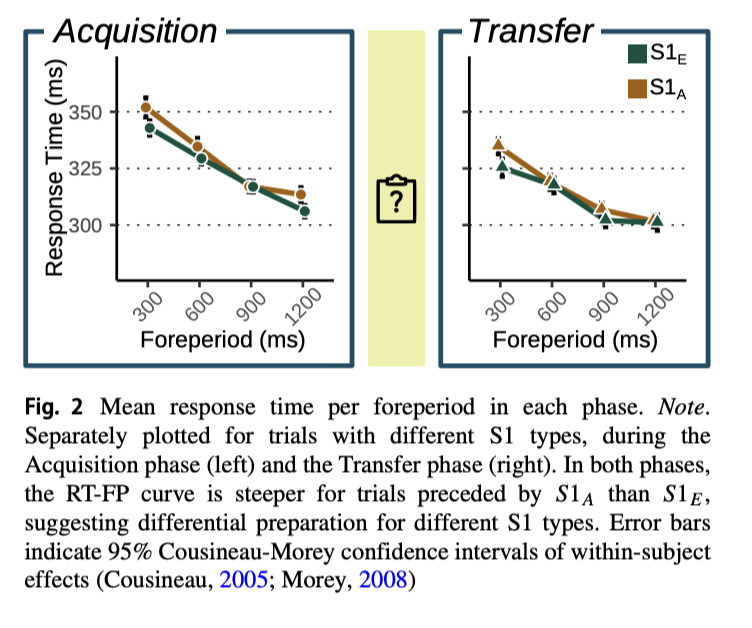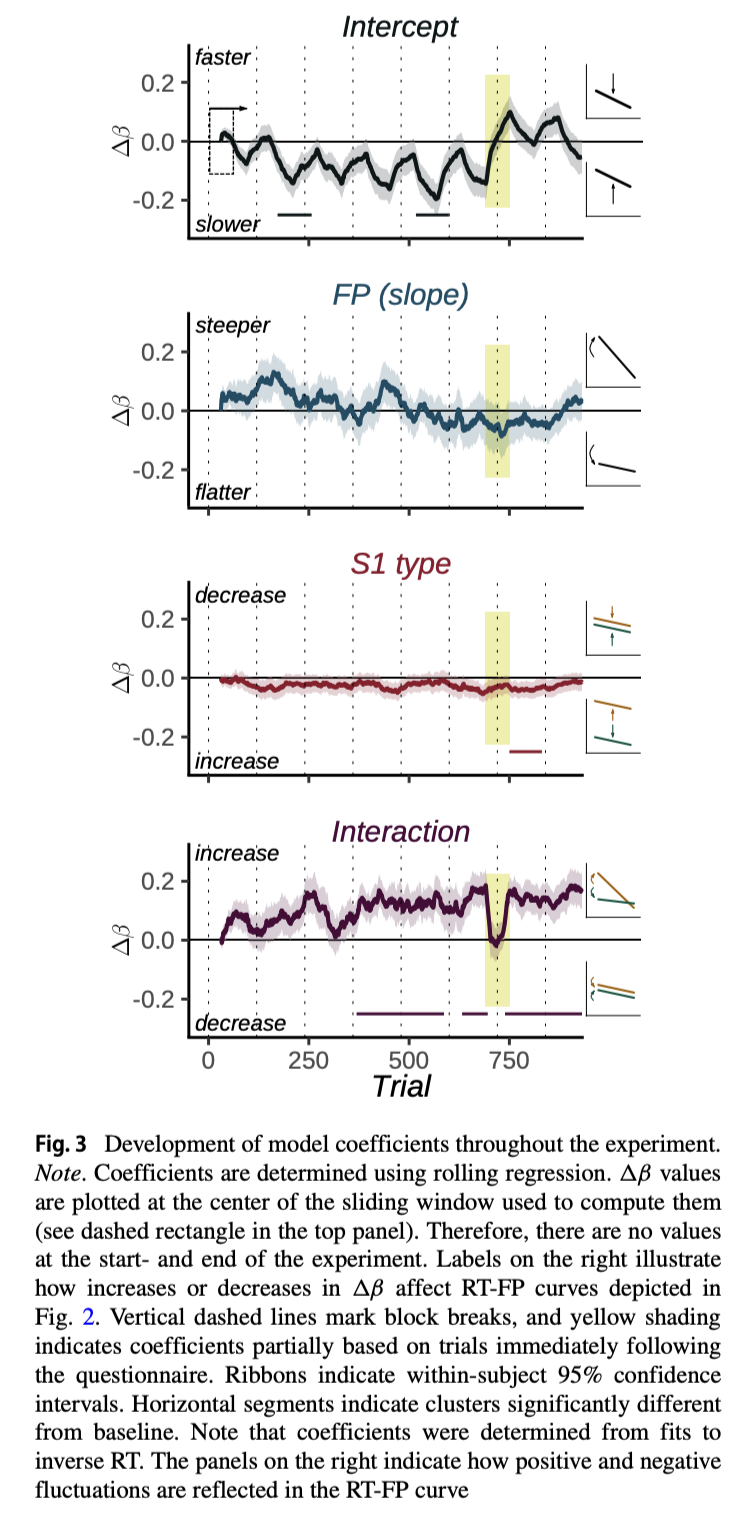Implicitly learning when to be ready - From instances to categories
-
Wouter Kruijne · Riccardo M. Galli · Sander A. Los
-
role of long-term memory in guiding temporal preparation in speeded reaction time tasks.
-
In experiments with variable foreperiods between a warning stimulus (S1) and a target stimulus (S2), preparation is affected by foreperiod distributions experienced in the past, long after the distribution has changed
-
associative nature of memory-guided preparation
-
When distinct S1s predict different foreperiods, they can trigger differential preparation accordingly
-
memory-guided preparation allows for another key feature of learning: the ability to generalize across acquired associations and apply them to novel situations
-
Images of either category were paired with different distributions with predominantly shorter versus predominantly longer foreperiods.
-
differential preparation to never-before seen images of either category, without being aware of the predictive nature of these categories
-
continued doing so in a subsequent Transfer phase, after they had been informed that these contingencies no longer held
-
rolling regression analysis revealed at a fine timescale how category-guided preparation gradually developed throughout the task
-
explicit information about these contingencies only briefly disrupted memory-guided preparation
Preparation across phases
Results
- the RT-FP curve, separately for the different S1 types during the Acquisition and Transfer phase
- this curve is flatter for trials paired with S1E types than S1A types in both phases, indicating that the categories yielded differential preparation
- significant FP × Phase interaction
- suggesting that there was a steeper RTFP slope during Acquisition than during Transfer
- evidence for a two-way S1 type × FP interaction
- but not for a three way S1 type × Phase × FP interaction
- different S1 types led to differential preparation in both phases
- biased distributions in the Acquisition phase gave rise to long-lasting effects on preparation, persisting after the bias was removed
Time course of differential preparation
- participants might have gotten somewhat fatigued throughout each block, but that block breaks allowed them to largely recover to baseline
- the longer interruption between the Phases led to a more pronounced speeding up for the remaining two blocks
- overall temporal preparation remained largely consistent throughout the experiment
- the results with a shorter window of 40 trials highlight that the ‘dip’ in the S1 type × FP time course at the start of the Transfer phase was very shortlived
- The brevity of this effect could therefore explain why our earlier work, using block-wise analyses, consistently led us to conclude that this transition between phases had no noticeable effect on differential preparation
Discussion
- Our findings raise the possibility that participants in that study might have demonstrated similar memoryguided preparation even if they would have been unaware of the image-FP pairings
- complex interplay between implicit associative guidance and guidance by explicit awareness
- Nevertheless, differential preparation was robust once acquired, persisting well into the Transfer phase despite the change in underlying FP distributions
- longer Transfer phases, we similarly observed that the S1 type × FP interaction barely attenuated across Transfer blocks
- The gradual acquisition of differential preparation and its longevity throughout the Transfer phase illustrate how temporal preparation is affected by long-term memory and sluggishly adapts to changing environmental statistics
- Many probability-driven models characterize preparation as guided by static representations of the current FP distribution (Janssen & Shadlen, 2005; Grabenhorst et al., 2019; Trillenberg et al., 2000; Vangkilde et al., 2013), foregoing the role of memory and learning
- Transfer effects like those in the present study illustrate the need for a flexible basis for preparation, subject to learning and updating


